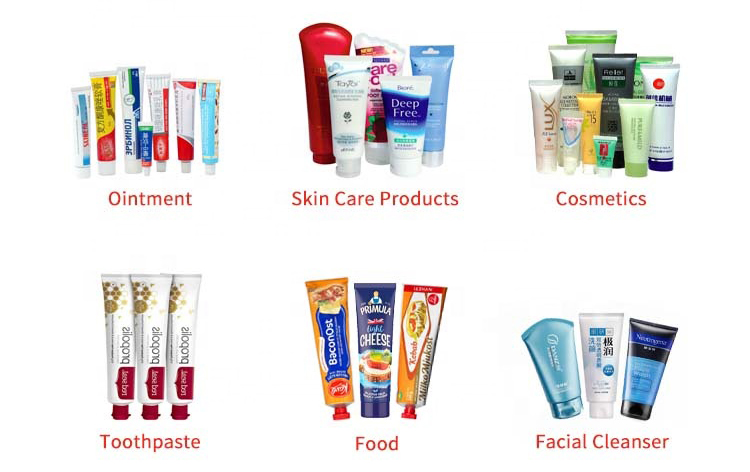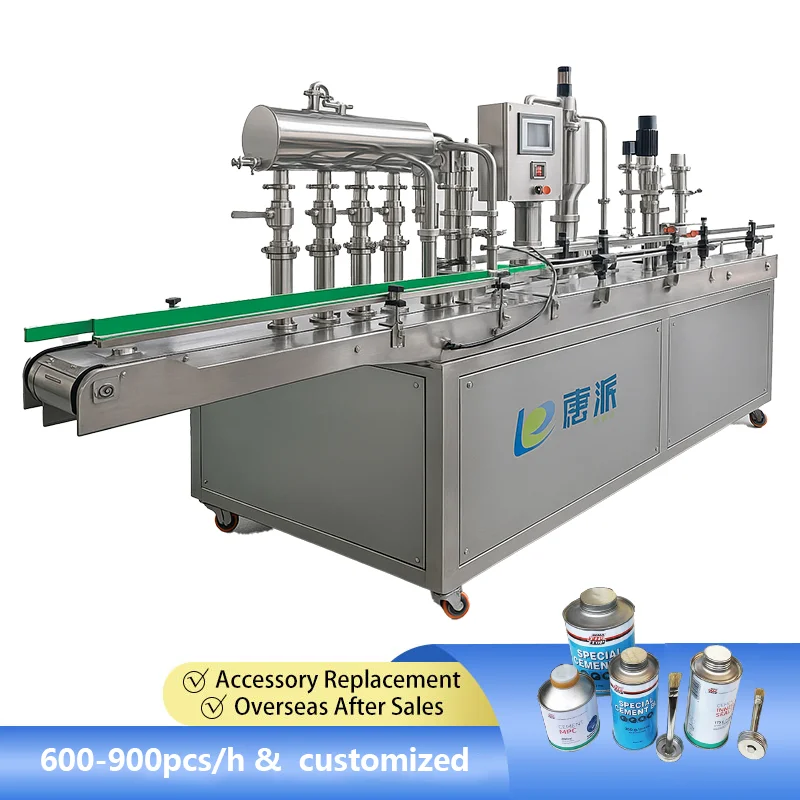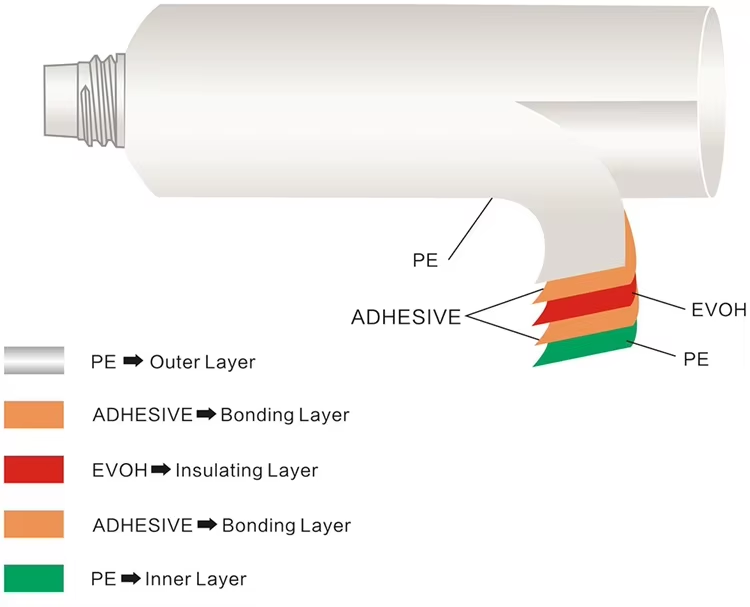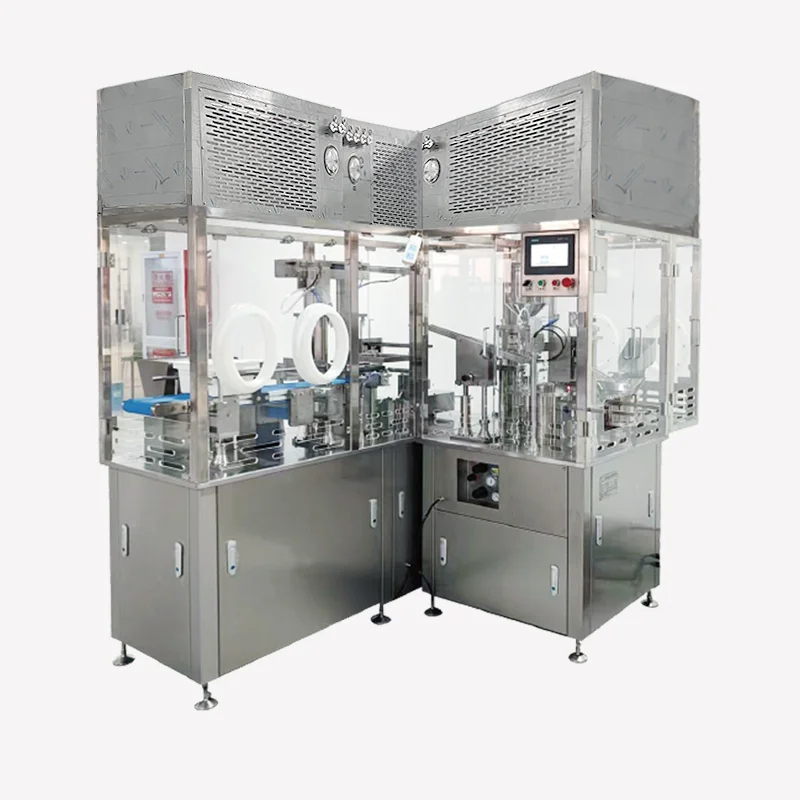Meta Description:
“Behind each nicely packaged product is an equally precise process with tube filling machines, clean dosing systems, and an automatic tube filling and sealing machine. From the standard-sized tubes to miniature toothpaste tubes, the process of packaging must be consistent, efficient, and contaminant-free.”
In this article, we shall describe how toothpaste tubes are filled, the technology employed for the same, and why businesses are dependent on suppliers such as King Pack, a renowned manufacturer of high-performance filling machines, tube filler machines, and automatic tube filling and sealing machines for oral care, cosmetic, and pharmaceutical businesses.
What is a Tube Filling Machine?
Toothpaste is as common as brushing your teeth, yet few individuals are aware of how the toothpaste ends up in the tube. A tube filling machine is a specific type of PLC based and touch screen machine utilized for filling thick products such as toothpaste, creams, gels, or ointments into pre-fabricated tubes. The tubes are made of plastic, laminated, or metal materials and are sealed after filling to prevent the leakage of the contents.
In order to fill toothpaste tubes, the machine not only has to deposit the appropriate amount of product into each tube but also seal it tightly enough that it will not leak and stay fresh. Tube filler machines specifically designed for the task can fill up to thousands of units per hour with high precision and little human input.
Major Features of a Toothpaste Filling Machine

Precision and cleanliness are taken into consideration when designing toothpaste filling machines, and therefore each tube is filled properly and efficiently. Used in either a small laboratory or a big toothpaste factory, the machines are a combination of a series of features that ensure the production of toothpaste is smooth and uniform.
1. High Filling Accuracy
Perhaps the most critical feature of any toothpaste filling machine is the ability to fill each tube with the exact amount of product. With servo motors, pneumatic fill equipment, or volumetric control, modern tube fillers offer repeatable product volume, reducing waste and offering product consistency.
2. Clean and Hygienic Operation
Manufacturing oral hygiene products is not a matter of hygiene choice. Toothpaste filling machines are typically made of stainless steel with food-grade quality contact parts to prevent contamination. CIP systems and dust-free enclosures are typically incorporated in high-end models to maintain GMP compliance.
3. Speed and Efficiency
Speed of production is essential in today’s competitive market. High-speed production from 30 to over 200 tubes per minute is offered by automatic tube filling machines, depending on the machine model. The machines enable continuous operation with the least amount of downtime between batches and maximum throughput.
4. Support for Multiple Tube Types
All types of tubes, from plastic tubes to laminated tubes, toothpaste tubes, and specialty tubes that are used for cosmetics or pharmaceuticals, are compatible with these devices. Quick-change parts and adjustable tube holders provide the facility for easy and quick tube changing of one size and shape to another.
5. Sealing mechanisms incorporated in tubes
One significant feature of toothpaste fillers is the built-in tube filling and sealing mechanism. Whether or not hot air sealing or ultrasonic sealing is used, equipment is utilized in order to provide leak-free and safe seals. This is for shelf life and product integrity.
6. Simple-to-use Touchscreen Control Panel
Most of the contemporary toothpaste tube packaging machines are supplied with an easy-to-use HMI (Human-Machine Interface) that enables the operator to adjust speed, volume, temperature, and seal parameters from a touch screen. Not only is this easier to use, but also more precise and cost-effective in production.
7. Automatic Tube Orientation
The tube filler machine utilizes a photoelectric sensor or mechanical system of identification and rotation of every tube to the appropriate position prior to filling. This is to correctly align branding on printed tubes at the time of sealing and filling.
8. Date Stamping and Coding
Most of the filling machines are supplied with in-built coding systems that stamp the manufacturing and expiry dates on the tubes. This is a key requirement for compliance with regulatory authorities in their respective foreign and domestic markets.
9. Modular and Compact Design
Toothpaste filling machines, particularly those of top Chinese companies such as King Pack, have a small footprint. Their modular design allows for future expansion, e.g., capping, labeling, and boxing integration.
10. Low Maintenance and Energy Efficiency
Next-generation machines are power-efficient but provide maximum performance. Parts are simple to install and repair, and this minimizes downtime and maximizes equipment lifespan.
How Does the Toothpaste Tube Filling Process Work?
Filling toothpaste tubes is a very sequential multi-step process—routing empty tubes, sealing and coding. This is how a standard tube filling and sealing machine operates:
Step 1: Orientation and Tube Feeding
The tubes that are empty are first filled into the machine’s tube feeder. Tubes must be aligned properly for accurate branding and barcode position. High-end tube filler machines utilize photoelectric sensors that detect orientation marks and rotate the tubes around into optimal position.
Step 2: Product Filling and Dosing
Once the tubes have been placed, the machine fills each tube to an exact amount of toothpaste. Depending on the type of toothpaste (whitening, gel, herbal, etc.), the dosing pumps can be adjusted for different viscosities. That is where precision filling machines shine—giving each tube the exact amount of product without any overflow or waste.
Step 3: Sealing (Heat or Ultrasonic)
Upon filling, the exposed end of the tube is closed with either:
Heat sealing: Standard for plastic tubes, controlled pressure and heat are applied to melt the tube in order to seal ends.
Ultrasonic sealing: Uses high-frequency vibration to produce frictional heat, appropriate for laminated or multi-layer tubes.
Equipment like the King Pack automatic tube filling and sealing machine offers both sealing alternatives based on the customer’s packaging needs.
Step 4: Coding and Ejection
The machine then prints a batch code, expiration date, or serial number on the closed end. This is for traceability and regulatory reasons. The tube is ejected softly onto a conveyor for secondary packaging or cartoning following coding.
Premium models feature sensors and cameras that detect defective tubes (e.g., under-filled, misaligned, or not properly sealed) and reject them automatically, so only the best products make it through.
Types of Tube Filling and Sealing Machines

Depending on production size and degree of automation, producers have several machine configurations from which to select.
Semi-Automatic vs Automatic Tube Filler Machines

Semi-automatic tube filling machines consist of manual loading of tubes and easy monitoring of operation. Suitable for small to medium-sized operations or pilot manufacturing.
Automatic tube fillers do everything
- Feed and fill
- Seal and code entirely automatically.
These are ideal for full-scale commercial production.
King Pack offers both types of tube filler machines, allowing companies to transition from test runs to global distribution.
Toothpaste and Other Tube Filler Applications
Although toothpaste is the largest consumer of tube filler machines, the technology is not limited to other markets:
- Cosmetics: Creams, lotions, and gels
- Pharmaceuticals: Medicated ointments and gels
- Food: Honey, sauces, or pastes in specialty packaging
No matter what market King Pack is in, their equipment can be adapted to suit particular product characteristics and sanitation requirements.
Materials Used for Toothpaste Tubes

Toothpaste tubes are produced with various types of materials, each possessing its own benefits for the protection of the product, shelf life quality, and equipment fill compatibility. Accurate material selection can enable high-speed production on a tube filling machine or automatic tube filling and sealing machine.
Plastic Tubes in Toothpaste Packaging
Plastic tubes, normally made of LDPE or HDPE, are cheap, light, and highly favored in toothpaste tube packaging. They are squeezable and easy to squeeze, and they are fully compatible with new tube filler machines and plastic tube manufacturing machines. Plastic tubes are the preferred mass production option for many Chinese toothpaste manufacturers.
Laminated Tubes With Barrier Layers
Laminated tubes contain barrier and plastic layers (e.g., aluminum or EVOH) for added protection. Common formats are:
- ABL (Aluminum Barrier Laminate) – perfectly suited to guard sensitive recipes
- PBL (Plastic Barrier Laminate) – 100% plastic, suitable for recycling
- They are ideal for
- Small toothpaste tubes
- Luxury cosmetics
- Pharmaceuticals
They can effectively keep automatic cream and toothpaste filling machines running.
Aluminum Tubes (Less Common) Aluminum tubes have good barrier but poor flexibility and are less suitable for high-speed tube filling machines. They’re used mainly for specialty or medical-grade toothpaste. Eco-Friendly Alternatives New toothpaste production facilities are shifting towards recyclable mono-material plastic tubes to meet sustainable goals.
These are being supported by equipment from companies like King Pack, which provide multi-type flexible filling machine solutions to be tailored to shifting materials. In short, tube material is less of an aesthetic decision—it’s about maintaining the formula, making the customer happy, and optimizing the production efficiency. Companies like King Pack provide advanced filling equipment. This equipment works with all major tube types. It helps manufacturers follow new packaging trends without losing productivity or quality.
Inside a Toothpaste Factory: Production Flow
In a factory that produces toothpaste, the manufacturing process is subdivided into an integrated system. Given below is a typical manufacturing process:
Ingredient Preparation: Both are mixed and homogenized together in stainless steel tanks in large quantities.
Emulsification: A vacuum emulsifier blends the formula in order to offer a consistent texture and removes air bubbles.
Transfer to Filler: Paste is conveyed to the tube filling machine for toothpaste through sanitary pipelines.
Sealing and Filling: Sealing and filling tubes utilize automatic tube filling and sealing machines.
Inspection and Coding: In-line quality check; non-conforming tubes are rejected.
Cartoning and Labeling: The filled tubes are packaged, boxed, and labeled for shipping.
Chinese toothpaste brands are often produced in 24/7 operating factories with fully automated lines. These facilities make use of high-speed tube fillers and automatic cream packaging lines to close and fill liquids or gels, stamp date and batch number so it can meet global demand.
King Pack facilitates such massive operations with turnkey plants and after-sales support, providing smooth and uninterrupted production.
Why to Use a China Automatic Tube Filler?

China at present is a world leader in manufacturing automatic tube filling machines with state-of-the-art technology at very affordable prices. If you own a small toothpaste factory or have a high-output cosmetic or pharmaceutical manufacturing line, choosing a tube filler machine from China can be an excellent bargain.
1. Affordable With No Sacrifice:
Chinese suppliers offer a range of tube filler and tube filling and sealing machine models at significantly lower costs than their Western counterparts—while maintaining performance. This allows manufacturers to scale up operations without sacrificing profitability.
2. Advanced Automation and Flexibility
New Chinese automatic tube sealing and filling machines support multiple functions including:
- Tube feeding
- Proper product dosing
- Ultrasonic or heat sealing
- Date coding and automatic ejection
They are also suited to hold plastic tubes, laminated tubes, and even small toothpaste tubes, so they are very suitable for multi-product usages like toothpaste, gels, creams, and ointments.
3. Customization and OEM Support
Chinese manufacturers like King Pack are professionals in custom solutions and offer custom filling machines that suit specific production requirements. Whether you need a small desktop filling machine for toothpaste or a high-speed filling product line, King Pack can supply capable and durable equipment.
In the short term, importing your China automatic tube filler, particularly from a trusted supplier like King Pack, ensures you get the most up-to-date technology, production efficiency, and best value for your production line.
Modern Toothpaste Production Needs Reliable Tube Filling Machines

It seems like a simple task, filling toothpaste tubes, but it is a high-tech industry with advanced tube filling machinery, labelling machine, patented tube sealing technology, and strict quality inspection. As customers increasingly demand high-end, travel-size, and environmentally friendly packaging, demand for tough machinery to keep pace is growing as well. As the quality of oral products, pharmaceuticals, and cosmetics improves, filling equipment that is consistency and hygienic is needed.
Regardless of whether you need a semi-automatic tube filler for low batch sizes or an automatic tube filling and sealing machine at high speeds for mass production, King Pack is the ideal solution. Being a leading toothpaste packing machine, plastic tube manufacturing machine, and complete packaging line manufacturer, King Pack makes your toothpaste company competitive in terms of quality as well as production. Looking for a dependable tube filling solution? King Pack offers precision, performance, and expert guidance—step by step.




